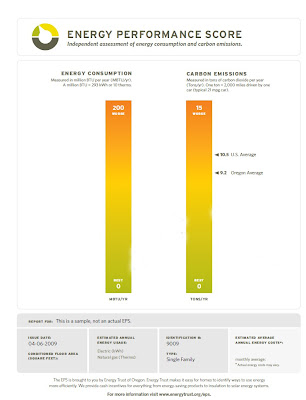Your mortgage broker can calculate your monthly payment quickly and easily. Property taxes and hazard insurance tend to go up over time, but generally not too drastically. There are some expenses however, that home buyers often underestimate; energy is one.
Energy costs have been increasing faster than incomes over the past few years. The newer methods for generating electricity, although “greener”, are not any less expensive. There doesn’t seem to be any near term relief in the cost of a unit of energy but if we can reduce how many units we use we can relieve the strain on the infrastructure and our own wallets. That’s where conservation comes into play.
By choosing a home that uses half, or less than half, of the energy a typical home uses, a family can regain control over the amount they spend on energy.
How do you determine which houses are efficient and which aren’t?
Just like the MPG sticker in the window of a new car there’s a scoring system for homes that gives consumers a way to compare. It’s called an Energy Performance Score or EPS. It was developed by Energy Trust of Oregon. You can learn more about it HERE.

Energy Trust of Oregon can arrange to provide an EPS on any home, old or new, but most builders should be able to provide you one for any home you’re considering buying.
Just as you wouldn’t consider purchasing a new car without knowing what its fuel mileage is, you should consider a home’s EPS before you make your final decision.
Mark Mecklem - Miranda Homes






No comments:
Post a Comment